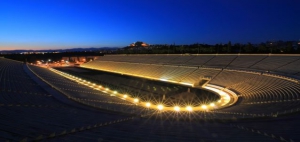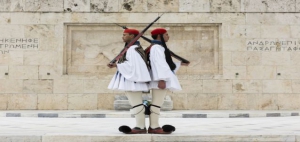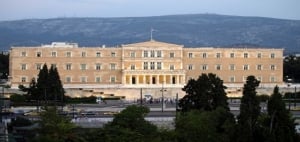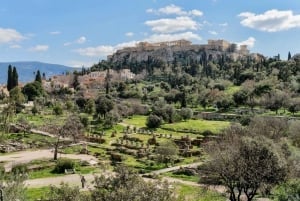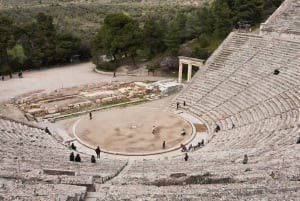Syntagma Square
Syntagma Square is at the historic heart of modern Athens. Syntagma, which means constitution, has been the location of many celebrations and protests and has many sites to explore. Since the first national parliament of the independent Greek state was established on 3 September 1843, it has been located in the former royal residential palace at one end of Syntagma Square. The library inside is well-worth the visit.
In front of the Parliament stands the monument of the Unknown Soldier - a tomb in memory of every unknown soldier or citizen who died in one of the many battles defending Greece. Built from 1929 to 1932, the monument is guarded by the famous 'Evzones' soldiers who are dressed in the traditional attire of the rebels who won the War of Independence. This includes a short white skirt with 400 pleats symbolising the years spent under Turkish rule, a red cap, and red pompom shoes. Evzones are selected from the tallest and most handsome men in the mandatory Greek military service. During duty they must remain completely motionless and at attention. Since the guards are required to be totally still at all times, police surveillance ensures that no one approaches or harasses the guards while on duty. Do not miss the changing of the guard, which takes place every hour. On Sunday morning at 11am this is a particularly spectacular event as a large troop of Evzones is accompanied by a military band.
Anastasios71 / Shutterstock.com
Cross the street to appreciate the full length and depth of Syntagma Square. Relax at one of the many cafes and watch skateboarder’s show-off their latest tricks.
Along Karageorgi Servias Avenue some of the most exclusive hotels in Greece face Syntagma Square. A gleaming vision of luxury passé, this is where diplomats and other important economic players stay. These are wonderful buildings that show how diverse the city of Athens still is. Walking through the city centre not only Greek, but also British, Italian, German and Ottoman architectural lines are obvious. These influences have shaped the city today.
Also found at Syntagma Sqaure is the Syntagma Metro Station. More than a metro station, this is a museum. Whether you need to take the metro or not, it is worth visiting. During the construction of the station an exceptional number of archaeological finds where discovered and are now on exhibition at the station. Ancient grave stones, pottery, an aqueduct from the fifth century BC, a 2000 year old beehive and a mosaic from the fifth century AD are some of the rare finds. Most interesting is the geological cross-section on display, with each layer of earth representing a different historical period. It also features a grave and a skeleton from the fourth century BC just a few metres below a 16th century cistern.
Take a walk down the broad avenue of Vassilisis Amalias. Along this elegant street of splendid neoclassical buildings, is the National Garden, which can also be accessed via Vassilisis Sophias Avenue, Herodou Attikoou Str and Zappeion Mansion. The garden covers a vast area of 160,000m2 and was formerly the royal garden of Queen Amalia. This unexpected oasis in central Athens was originally planted in 1839 before is was opened to the public in 1923.
Continue a beautiful walk behind the National Garden towards Vassileos Konstantinou Avenue to see the Kallimarmaro Stadium, which means 'beautifully marbled'. Reconstructed in 1895 from the remains of the ancient Greek stadium known as the Panathenaic, it is the only major stadium in the world built entirely of white marble (from Mount Penteli). The original stadium constructed in 566 BC had wooden seating and was used to host the athletic portion of the Panathenaic Games, in honour of the Goddess Athena. In 1896 Kallimarmaro Stadium hosted the first modern Olympics. During the 2004 Olympics, it presented the final circuit for the Olympic marathon and also hosted the archery competition. On rare occasions, the stadium is also used as a venue for select musical performances.


